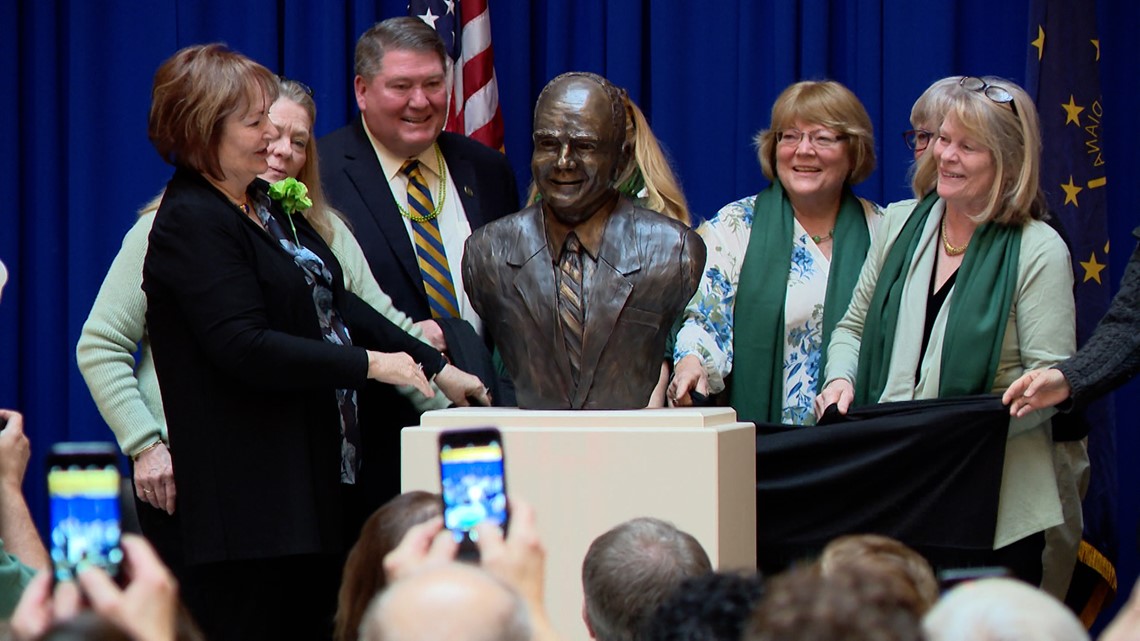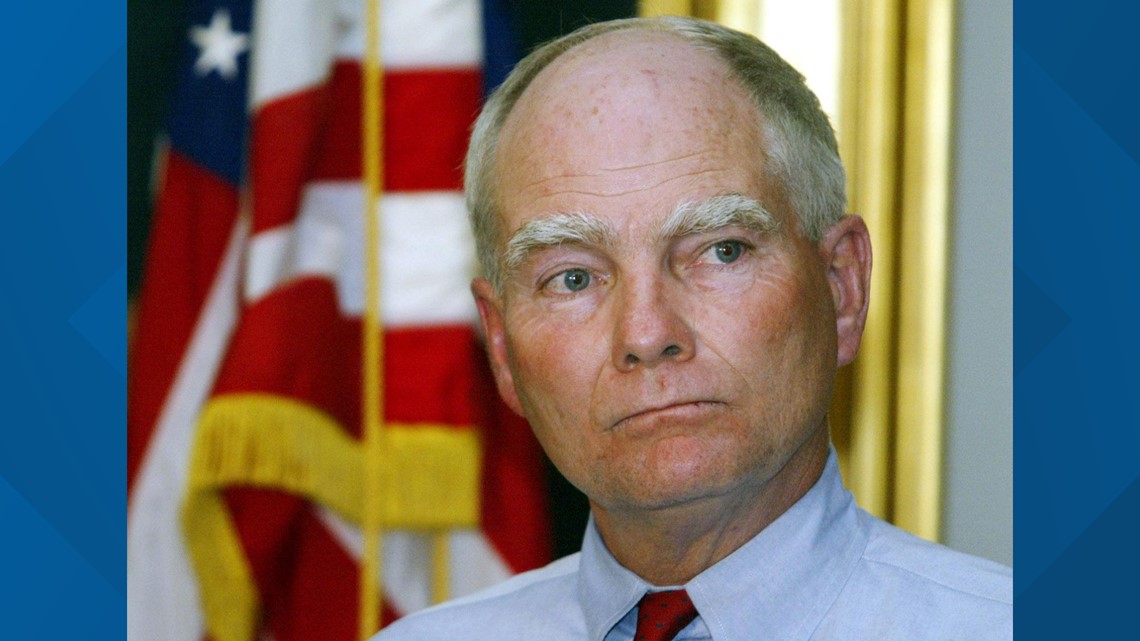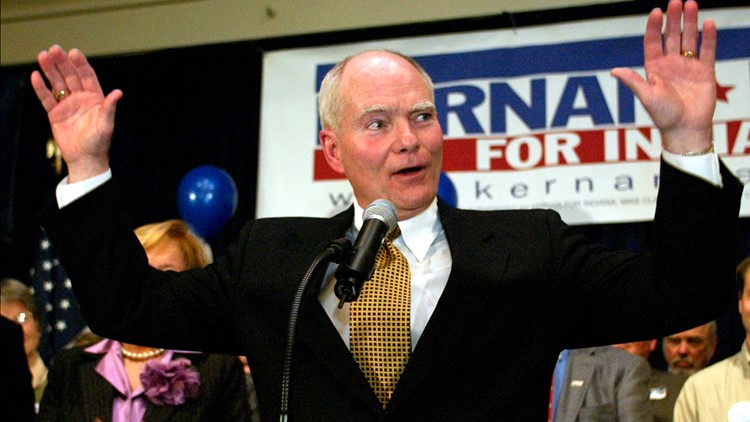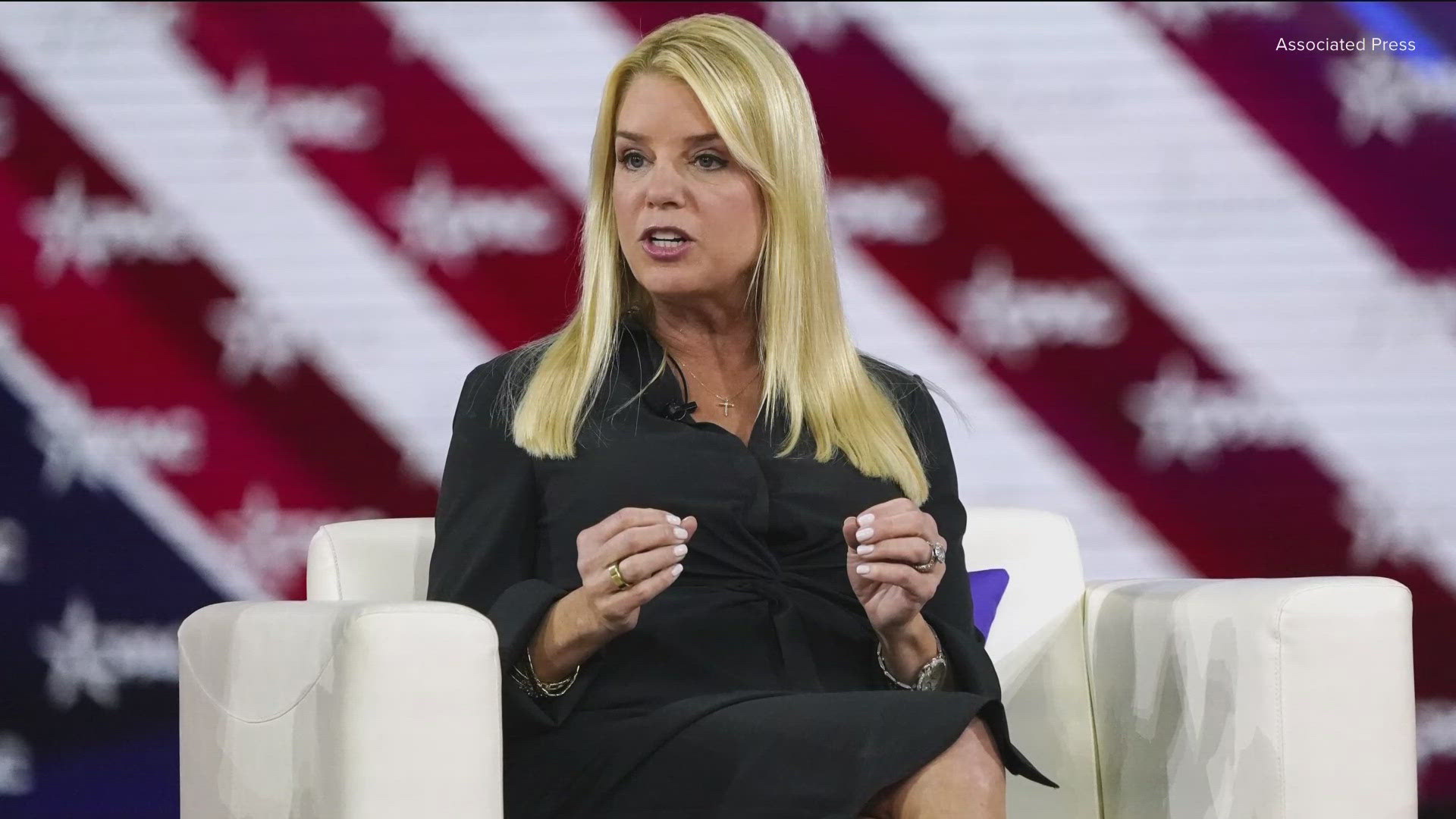INDIANAPOLIS — To the congressional Republican rank and file, Democrats today are often described as "radical leftists" or "socialists" and even "Marxists." There have been Hoosier Republicans who described Democrats as partisans who "don't love our country."
I would have loved to have seen the reaction to this type of criticism from the last Indiana Democratic Gov. Joe Kernan.
Kernan passed away at age 74 in July 2020 due to complications from Alzheimer's disease. Last week, with bagpipes playing at the Statehouse, Republican Gov. Eric Holcomb joined former first lady Maggie Kernan, family and friends in unveiling a bust of Kernan.
“It’s obviously just a perfect day, on St. Patrick’s Day, that we set aside time for this unveiling of this truly – a man that’s been kind of referred to over time – as a legend, a leader, a statesman and so much more than that,” Holcomb said. “Gov. Joe Kernan was certainly all three of those.”


Kernan served three terms as mayor of South Bend before Frank O'Bannon selected him for the Democratic ticket in 1996. Kernan reluctantly accepted the nomination, and with an upset win, moved to Indianapolis from his beloved South Bend. He served almost seven years as lieutenant governor, and upon O'Bannon's death in 2003, became governor.
But more importantly, as a Navy navigator based on the USS Kitty Hawk, he was shot down over North Vietnam in 1972, spending the next 11 months as a prisoner of war.
When he died, then-Purdue President Mitch Daniels, who defeated Kernan in the 2004 gubernatorial race, observed that his predecessor “was at different times my ally, opponent, and advisor, but always a friend to me, and as far as I could tell, to everyone he met. In wartime and in peace, he embodied patriotism and the goodwill toward all we associate with the term ‘Hoosier.’ He was a true leader, and we have lost him far too soon.”
Daniels drew on Kernan’s experience as a mayor and asked him and then-Chief Justice Randal Shepard to head a commission weighing local government reform.


Holcomb, a U.S. Navy veteran, keeps portraits of two of his predecessors – Kernan and Republican Gov. Edgar Whitcomb – in his Statehouse office. Both had been POWs. Whitcomb, a B-17 navigator, was captured by the Japanese during World War II, winning the governorship in 1968 after writing the book “Escape from Corregidor,” which detailed his eight-hour swim to the Philippine mainland.
“This official portrait of him, kind of larger than life, to this day, still looks down at me over my shoulder, almost as if he’s grading my work," Holcomb said of Kernan. "Joe could connect with anyone, anywhere. His character was impeccable, his courage unwavering – his unrelenting commitment to duty is again, legendary.”
The gubernatorial legacy of Kernan was a mere flash in time. Upon the death of O’Bannon on Sept. 13, 2003, Kernan became the 48th Indiana chief executive. He was defeated for a full-term 15 months later and left office the following January.
Kernan gave only one State of the State address (in 2004, described by Howey Politics as “exceptional”) and didn’t preside over a single biennial budget process.
Kipper V. Tew, who was a close political ally and served as Indiana Democratic chairman under Kernan, observed of the late governor’s legacy, “No. 1, he picked the first female lieutenant governor in Indiana history,” as well as the first female chief of staff with Mary Downes.
What would a full-term by Kernan have been like?
“He proposed a big increase in the number of community college campuses. I would argue he was at least a decade ahead of where folks are … now," Tew said. "He asked for tuition and fee increases to basically freeze at the rate of inflation (somebody followed his advice at Purdue years later).”
On health care, Tew said Kernan advocated lower prescription prices for seniors. He signed legislation creating the state prescription drug purchasing pool. He would have sought to provide protections for the uninsured.
“There are many more things he did in his way-too-short time in office,” Tew said. “I firmly believe had the election gone our way, he would have been one of the most consequential governors in state history. He had all of the tools, drive and desire to make a difference.”
“Joe’s priorities would have stemmed from the kind of person he was – someone who was compassionate, competitive and ridiculously smart; someone who famously encouraged everyone on his team to ‘do the right thing, always," said Tina Noel, Kernan's press secretary as both LG and governor.
“I think his work on government efficiency and improving Hoosiers’ interactions with state agencies would have continued,” Noel said. “Joe would have done all that he could to ensure that our state’s veterans received the care they deserved.”
What is the lesson here? During the O’Bannon and Kernan era, Indiana was a true two-party state. Republicans and Democrats would fight with piss and vinegar over biennial budgets and policy. But back in those days, no one’s patriotism was questioned.
“Those among us so ready to bear malice against those with whom they differ and either so ignorant or so ungrateful that they disdain those whose sacrifices gave them the freedom to express their views should pause and consider the life and character of Joe Kernan,” Daniels said.
The columnist is managing editor of Howey Politics Indiana/State Affairs at StateAffairs.com/pro/Indiana. Find Howey on Facebook and Twitter @hwypol.



